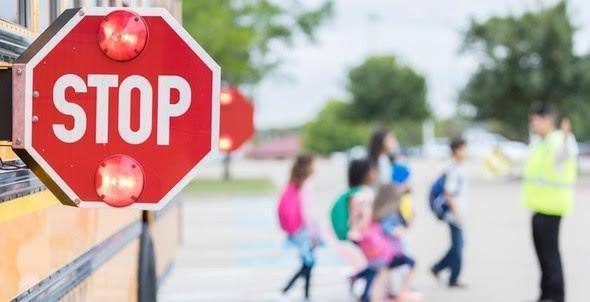School Bus Safety
Because the safety of our students is our top priority, we now have stop-arm cameras installed in every CCSD school bus. These stop-arm cameras act as a witness to drivers running a school bus stop sign. The stop-arm cameras are positioned in order to capture images of front and back license plates and the face of the driver, all the information needed to prosecute offending drivers.
Over 480,000 school buses nationwide transport students daily and although operators are consistently trained on safe loading and unloading procedures, they are unable to control other vehicles on the roadway. Please help us keep our kids safe by reviewing safety tips provided below and don't hesitate to report unsafe or illegal actions you observe at or around bus stops.

NHTSA is urging you to drive safely, and remember these rules about school bus safety:
Tips for Motorists:
- Be alert and slow down when driving in neighborhoods with school zones.
- Watch for children walking, playing or assembling near bus stops. Children arriving late for the bus may dart into the street without looking for traffic.
- Obey the school bus laws in your State, as well as the "flashing signal light system" used for school buses.
- Yellow flashing lights indicate the bus is preparing to stop to load or unload children. Motorists should slow down and prepare to stop their vehicles.
- Red flashing lights and extended stop arms indicate the bus has stopped and children are getting on or off. Motorists must stop their cars and wait until the red lights stop flashing, the extended stop-arm is withdrawn, and the bus begins moving before they can start driving again.
Tips for caregivers and students:
- Arrive at the bus stop at least five minutes before the bus is scheduled to arrive. Stand at least three giant steps (six feet) away from the curb. The bus stop is not a place to run or play.
- When the school bus arrives, wait until the bus comes to a complete stop, the door opens, and the driver says it’s okay before approaching the bus door. Use the handrails to avoid falling.
- Never walk behind a school bus. Walk on a sidewalk or along the side of the street. Cross the street in front of the bus with at least five giant steps (10 feet) between the front of the bus and you. Make eye contact with the bus driver before crossing to make sure the driver can see you.
- If you drop something near the school bus, like a ball or book, tell the bus driver right away. Do not try to pick up the item, because the driver might not be able to see you.
Concern for the safety of students is spreading nationwide and it’s imperative that you take time to spread the word to your friends, families, neighbors, and followers.
Young lives depend on you driving safely.
School Bus Safety
- Make habit of arriving at the bus stop at least five minutes before the scheduled arrival of the bus.
- Make sure your child stays out of the street and avoids excessive horseplay while waiting for the school bus.
- Be sure the bus comes to a complete stop before getting on or off.
- When riding the bus, make sure your child understands they must remain seated and keep their head and arms inside the bus at all times.
- Do not shout or distract the driver.
- Do not walk in the driver’s “blind spot” — this is the area from the front of the bus to about 10 feet in front of the bus.

.png)
